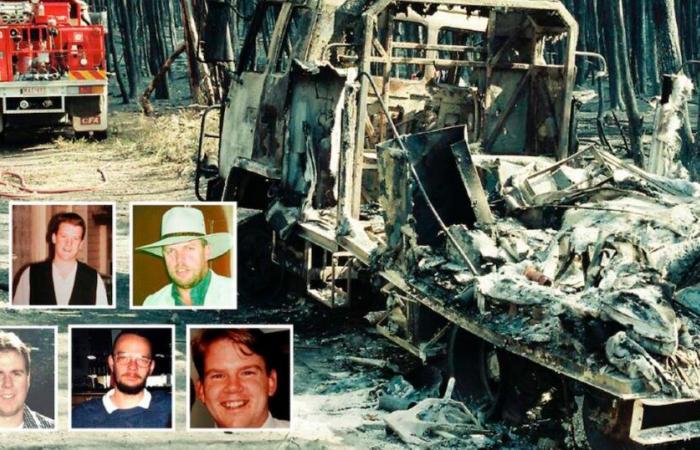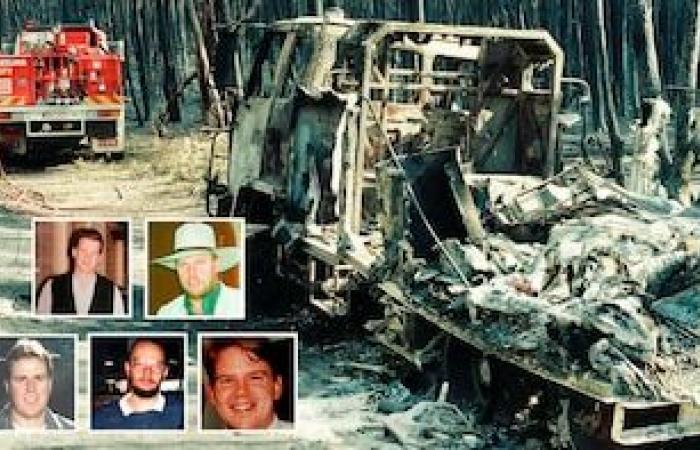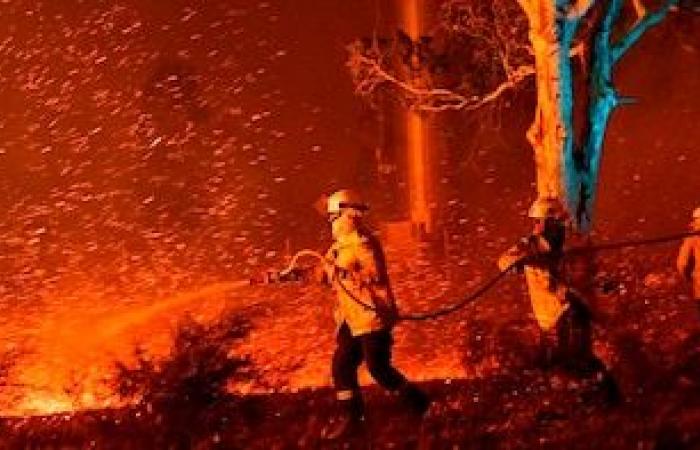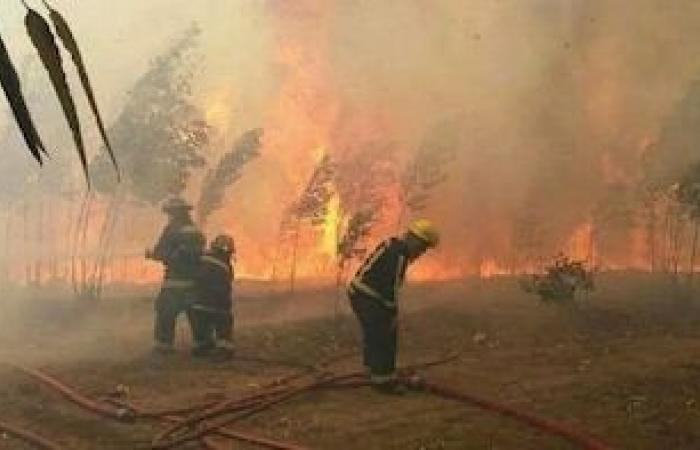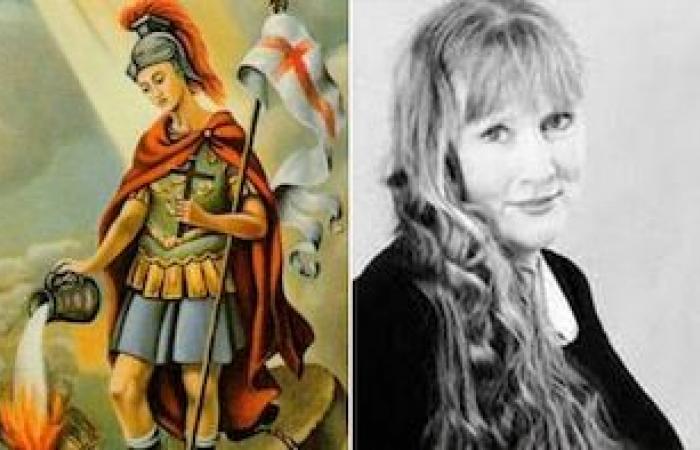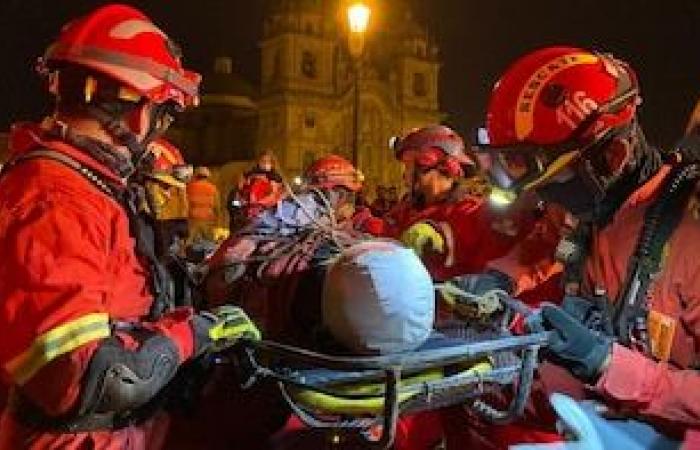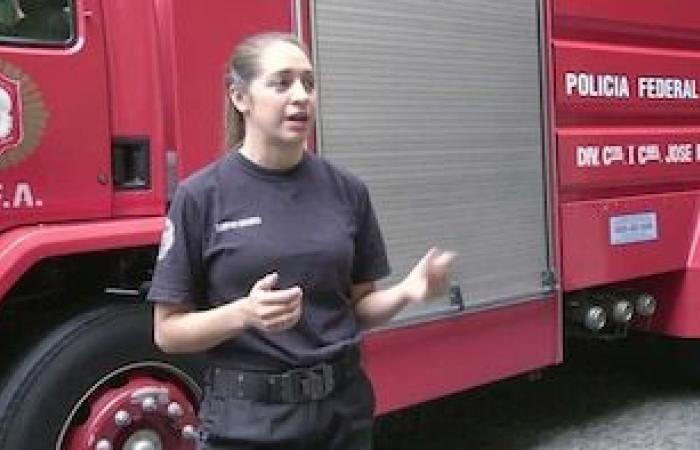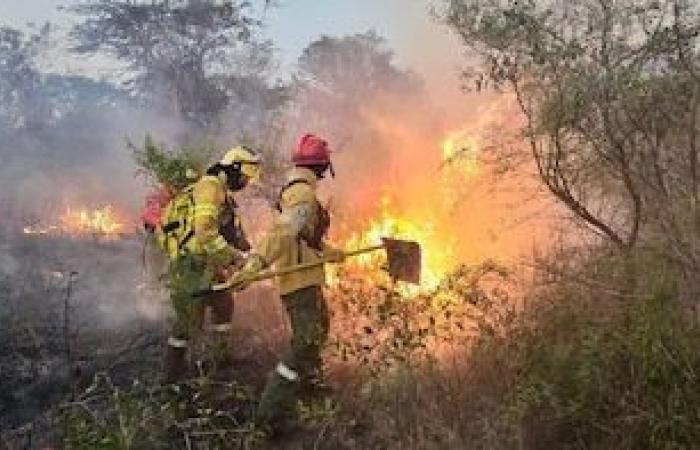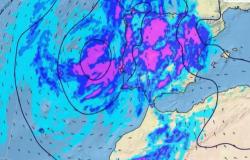The afternoon of December 2, 1998overwhelming heat, with temperatures above 30 ° C, perched on Lintona small rural town in the state of Victoriain Australia. The wind blow dry, the vegetation was withered and extreme temperatures transformed the landscape into unstable terrain, prone to the tragedy. In that context, the focus of a forest fire, apparently accidental, began, which began to expand on the outskirts of the people. The dark smoke began to cover his eyes in a threatening way as the fire advanced quickly.
The sirens sounded in the Australian barracks because the authorities had activated an alert and urgently summoned brigades of Volunteer Firefighters of different points of the region. Among them, five volunteers from the Geelong West barracks, Stuart Davidson, Jason Thomas, Garry Vredeveldt, Christopher Evans y Matthew Armstron.
With the vocation of fulfilling the duty, they ran to suffocate the fire, without knowing that they would be trapped between the flames and that that heroic action would be the last of their lives. The tragedy shocked the country and sowed the seed of what, months later, would become the International Firefighter day.
Since 1999, every May 4, tragedy is commemorated with tributes to firefighters around the world: the sirens of different corners sound in honor of those who face the fire without expecting anything in return.

There was smoke in the air, but no one imagined what was about to happen. According to the official investigation of the Country Fire Authority (CFA)it all started with a spark. A little spark – at the same time a machine, perhaps a human carelessness, was never known – in wooded terrain on the outskirts of Linton. The fire, at first it could be contained, but in its path it found dry vegetation and the wind became its best ally: it expanded, changed in shape, direction, speed. And in minutes, he ceased to be a focus to become a lethal threat.
The fire spread as if the ground pushed it. The topography of the place – irregular and rugged, with dry eucalyptus – played against. Nothing was predictable. But the worst came later: a sudden thermal investmenta natural phenomenon, although rare, that alters air behavior, changed the wind and the direction of fire in seconds.
The flames, first driven towards a sector that seemed safe, fell on one of the pumps. There they were Stuart, Jason, Garry, Christopher y Matthew. They were trapped without the remote possibility of escaping. The truck disappeared in the smoke and the fire did not take respite. Minutes later, Simon Scharf, endowment partner, knew on the radio what had happened.

“when I received the call that they had been achieved, I felt Nausea immediately … I couldn’t breathe,” I would say years later in an interview with ABC. He hung and went to the place to see what was left. “There were trees burning everywhere. We found the truck. It was destroyed,” told
The images of the calcined vehicle, the helmets molten by the fire and the names of their companions printed on bronze plates toured Australia and the world. Tributes began in different cities, there were flowers for the five brave and also minutes of silences. But the questions also began: What happened? How do you get to that? What protection do they give everything without asking for anything? That tragedy exposed the fragility of volunteer firefighters in the face of increasingly unpredictable, more violent, more extreme fires.
In the midst of pain, the firefighters lieutenant, Julie Jane Edmondson “Known as JJ Edmondson,” he said, needed to do something. He was specialized in security and training exercises that sister to volunteers. She talked about “Be part of a big family”, That is why he was very affected with the deaths of his companions. He wrote a letter, not to find guilt, but to propose something: asked that the world remembers that tragedy and that there were a day to remember those who died in compliance with duty.

“The role of a firefighter in today dedication, commitment and sacrificeregardless of which country we reside and work. In the Fire Service, we fight together against a common enemy: fire, regardless of what country we come, what uniform we use or what language we talk about, ”he wrote.
He suggested on May 4, San Florián Day, Patron of Firefightersa venerated figure for centuries in Austria, Poland and Germany, where it is recognized as protector of those who fight fires. Florián was a Roman officer of the third century who organized a fire brigade and died executed for defending his faith and his companions. Its history, associated with value, delivery and sacrifice, offered the perfect symbol. The proposal soon turns the world.
Since then, every May 4, in schools, barracks, squares and memorials, sirens sound not for emergency, but by memory. In honor of Stuart, Jason, Garry, Christopher and Matthew, and so many other volunteer firefighters.

In Argentina, the commitment and vocation of volunteer firefighters has deep roots. The first volunteer fire department was founded in the neighborhood of The mouth In 1884, at the initiative of a group of neighbors led by Tomás Libertia genus immigrant who saw how the flames consumed part of the port without anyone being able to act on time. Since then, the volunteer firefighters network grew to became a civil defense pillar.
Currently, there are more than 1,100 barracks distributed in all provinces, which make up the national Volunteer Firefighters System. According to data from the National Council, More than 58,000 people They are part of these bodies. Of that total, Around 12,000 are womenthat is to say, one every five men. Many of them occupy leadership roles as leaders of endowment, instructions or specialists in technical bailouts.
Throughout these years, many outstanding figures emerged that left their mark on the activity of the firefighters. One of them was José Luis MoureHead of the Volunteer Firefighters of San Fernando, who died in 2002 during a rescue operation. In Stallsnine public servants died in 2014 during the deposit fire Iron Mountainin one of the worst recent urban claims.

Among them he was Anahí garnicathe first bomber woman of the active body of the Argentine Federal Police in dying in service. He was 27 years old and was assistant noncommissioned officer. He had begun as a volunteer in the La Matanza barracks and forced force in 2001, moved by an early vocation that led her to break molds in an environment historically dominated by men. He February 5, 2014participated in the operation to control the fire in the Iron Mountain file deposit when a wall of the building collapsed over it and other companions. His body was found among the rubble. In the subsequent official act, it was posted posthumously to the degree of sub -inspector, and since then His name is a symbol of delivery and struggle for equality within the forces. “She died doing what she loved,” her mother would say in one of the many ceremonies in her memory.
And in Lujánthe veteran Juan Carlos Mulki It is remembered as one of the pillars of the local barracks. He volunteered in adolescence and dedicated more than four decades to the formation of new generations, transmitting not only techniques and protocols, but an ethic of work based on solidarity, discipline and responsibility. With him, dozens of young people learned to respect the uniform and to understand that being a firefighter is not just turning off fires: it is being, as long as it is needed. Mulki was also an instructor at the Federation of Volunteer Firefighters of the Province of Buenos Aires and participated in rescue operations during the floods of 1985, the fires in the mountain area and multiple large -scale emergencies. Still retired, It remains a reference for the entire country’s bomerile community.
In recent years, Argentine firefighters had to face some of the most serious forest fires in recent history. In Córdobafor example, summers became synonymous with alert. There, the local brigades and volunteers from other provinces had to combat the flames during days of more than 12 hours, crossing hills, saws and fields, often with few resources.

In Corrientesin the summer of 2022, there were fires that swept more than one million hectares, including estuaries, fields and rural areas. There, firefighters worked day and night with national parks and local residents, with temperatures greater than 40 ° C and winds that complicated each maneuver.
Recently, Patagonia, suffered the fires of Chubut and Río Negroin areas such as Lake Puelo and El Bolsón, where the fire demanded large -scale coordinated deployments, where the steep terrain and isolation made both direct combat and logistics difficult.
In all cases, the Vocation, delivery, and a solidarity network that is still activated in adverse conditions was present. With extended shifts, uniforms soaked in smoke, and many times without sleep, firefighters – mostly volunteers – became the last limit between the fire and the life of hundreds of families, animals and entire communities. Some returned with exhausted body. Others, with wounds. Others did not return.

